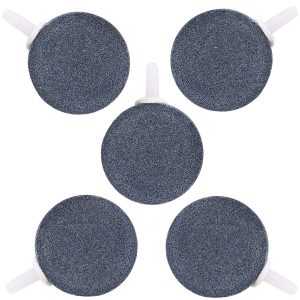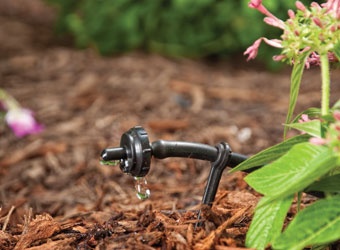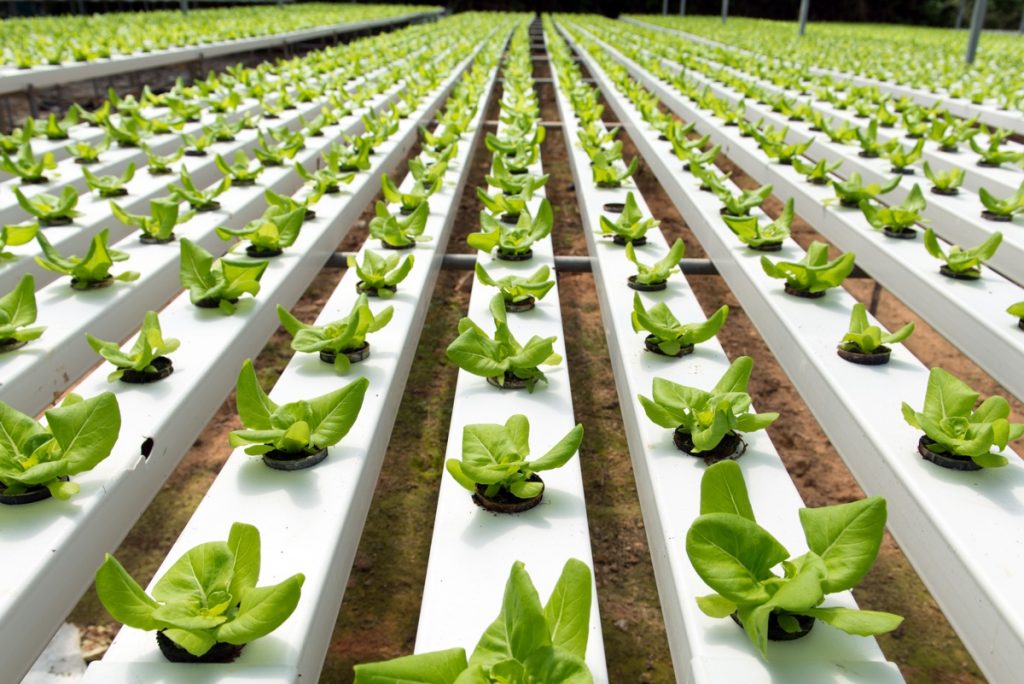Hydroponics is the relatively easy and hassle free way of growing plants. The soil less plant growing technology is quickly catching on with farmers also.
There are many techniques with hydroponics; the system which is appropriate to you depends on the space, light availability, water availability and the species of plants. The hydroponic drip system is an efficient way to produce great quality produce and its getting popular with urban farmers who don’t have the advantage of large space.
Of the six hydroponic systems available; drip system helps in supplying water and nutrients directly to the plant. Drip system helps in reducing water loss as it directly supply water to the plant root system.
In this article we will discuss what is a drip hydroponic system- How it works? Types of drip system, how to build a drip hydroponic system? and the advantages of drip system.
What Is An hydroponic drip system?
Drip hydroponic system is a type of hydroponic system where water and the nutrients are supplied to the plant roots slowly by drip irrigation. Drip system supplies the water from above the surface of the medium or from below.
Water is supplied slow drips so that the plant roots are kept moist but not over watered. This method reduces water evaporation as the water is slowly being dripped and also water wastage by leaching or run off.
In drip hydroponic system there is control over how much water needs to be supplied for the plant.
How Does It Works?
The drip system supplies water +nutrient solution directly to each plant. From the water + nutrient reservoir the solution is supplied through the drip pipes and tubes directly to the plant. The water + nutrient are supplied via a submerged pump or can be done by a gravity method.
The solution is supplied to the plant directly through tubes connected with drip emitter. The emitter helps to control the water flow. If left without an emitter the tube will supply water continuously without interruption and flood the plant. The emitter can help us control the exact requirement of water needed for each plant. The growing media should not be continuously wet; it needs to be dry in between.
A timer can also be used to control the flow of water. Thus the system can be fully automated by using a pump and timer to supply water from reservoir to the plant.
Plants Most Suitable to Grow in hydroponic drip system
Drip hydroponic system can be used for large plants as well as small plants. Various growing media like rock wool, clay pellets, coconut coir and gravel can be used. Drip hydroponic system help to hydrate even the large plants through its slow watering system. Some of the plants that are best suited for drip hydroponic system are
- Lettuce
- Tomatoes
- Peas
- Cucumbers
- Zucchini
- Melons
- Onions
- Pumpkins
- Strawberries
How to Create Your Own hydroponic drip system?
The different components that make up a drip hydroponic system are
Reservoir for nutrients
Nutrient solution need to be placed in a large enough container to fulfill the availability of all the plants. The container should be kept at a place which is readily accessible to us so that we can monitor and fill it up when required. The container should be made of non transparent material so that it blocks the growth of algae and bacteria. If the container is transparent then we need to cover it with opaque materials or paint it black.
Submersible pump
If you are not keeping the reservoir at a height to allow gravity method to take over, then it is better to get a submersible pump. The pump helps to supply water through the pipe to the plants.
Air stone /air pump

An air stone can also be used to oxygenate the plant root. Oxygenated nutrient help the plant take up the nutrient more and grow faster.
Container for plants
We can use one large container for all the plants or individual containers for each plant. You can also use large PVC pipe with holes to hold each plants. Vertical garden setup is also ideal for drip system.
Growing medium
Growing medium is essential for all hydroponic systems, for drip system especially a good growing medium which can hold moisture is required. The growth media should also provide good air circulation and drainage.
The best media for drip system are coconut coir, rock wool, expanded clay (leca).

Distribution lines
A large diameter pipe or tube is used as the main distribution line from the water reservoir. There is small diameter feeder pipes used to supply water to the plant root.
Drip emitters

Drip emitter lets you control the amount of nutrient solution being supplied directly to the roots of the plant. The emitter has a control which lets you to adjust the drop intervals and the amount of nutrient supplied to the plants.
Hydroponic nutrients
These are nutrients essential for plant growth. They are pre mixed nutrient solutions required for the plant growth that are mixed into the water.
Timers and pressure regulator
Timer help to regulate the time for watering thus save water. Timer automates the drip hydroponic system. Pressure regulator helps you control the flow of the water in the drip system.
pH tester
We need to check the pH level of the water in the reservoir so it is best to have a pH test kit. The optimum pH requirement for different plants need to be taken care of and monitored so a regular pH test is essential for healthy plant growth.
Types Of Hydroponic Drip Systems
Recirculating/recovery
All the water that is supplied to the plant using drip system is not used up by the plant roots. The left over water from the medium can be reused by sending it back to the reservoir and then using it again. This is called as recirculating or recovery drip system.
The excess water that enters the reservoir changes the pH level of the water in the reservoir. Therefore we have to test the pH level of reservoir water at regular intervals in the recovery system.
Non-circulating/non recovery
In this system the excess water is not send back to the reservoir instead it’s removed as waste water. The water wastage for drip system is very less.
The positive side of this system is that the pH of the reservoir won’t change as no waste water is getting into the reservoir.
Setting up the system
The drip system is easy to set up and maintain. The way to set up drip system is as below.
Place the water pump inside the reservoir and connect the drip pipes and tubes. The PVC tubes are then connected to the small diameter PVC tubes. The ends of the tubes are connected to drip emitters. The drip emitters are then focused to the root of the plants in the growing container. The pots are then placed in the tray to collect the waste water. If this is recirculating system then the tray is connected to reservoir to collect the runoff water. If it is a non circulating system then the water is allowed to run off elsewhere.
If the reservoir is placed at a height then there is no need for a pump the gravity will take care of the water supply. The whole system can be automated if a timer is connected to the power source of the electric pump.
Drip hydroponic system has a lot of advantages when compared to the other hydroponic systems
Advantages
- Drip system is cheap and easy to install. We can build a drip system with simple things we can get, which are not that costly.
- There is less equipment used so we don’t need worry of about system failures.
- Drip system help to provide nutrients in a more controlled way to the plants roots.
- The watering schedules can be controlled.
- There is high efficiency in the delivery of nutrient solution.
- The drip system can be used for small plants as well as large plants.
- We can also control the drip location in the drip system
- Water wastage is very low
Disadvantages
There are also some disadvantages to drip hydroponic system
- pH fluctuation of the nutrient solution is a disadvantage. The pH changes affect the plant health.
- Drip emitter clogging is one major issue with the drip system. The emitter can clog up due to physical matters in the nutrient solution or it can be due to the algae formation.
- Wastage of water can occur if a non recovery system is being used.
- If recovery system is being used then the pH maintenance can become a difficult task.
- If reservoir is kept down then the system has dependency on electricity.
- The PVC pipes can be chewed on by rodents
Tips
Below are some tips that can help you setup a great drip system
- Water temperature is important in drip system it is best to keep the water temperature between 65 to 70 degrees.
- Air stones placed in the reservoir help to oxygenate the nutrient solution there by providing more oxygen to the root of the plants and thus absorb nutrient faster.
- pH of the nutrient solution need to be checked regularly to maintain healthy plant. Plants can look discolored or unhealthy if there is a pH change in the nutrient solution.
- Scheduled nutrient solution change is essential for the up keeping of the drip system and to maintain healthy plant.
- There should be a regular cycle of nutrient update in the drip system.
- Emitters need to be unclogged on a regular basis.
- Once the growing cycle is completed the entire drip system need to cleaned and sterilized. It is essential to clean the reservoir and remove any debris from the container as if let it can cause clogging and bacterial formation.
Conclusion
- Hydroponic systems are a new way of farming. Among all the six hydroponic systems drip system is the most efficient and low maintenance.
- If we see the advantages and disadvantages it is clear that the advantages overweigh the disadvantages in the drip system. Drip system is the most versatile and efficient hydroponic system.
- It is gaining popularity as it is most cost efficient way to supply the nutrients required for plant growth. Drip system lets you control the water quantity to be supplied to the plant and the nutrients are supplied directly to the root of individual plant thus supplying the nutrients equally to all the plants.
- Recovery drip system is very helpful in the case of home growers as there is zero wastage of water. Non recovery system is usually used by commercial growers opt for non recovery drip system. Selecting a good growing media also help with drip system.
- Drip system help to produce plants with maximum yield as the nutrients are directly supplied to roots of the plant.


This has sounded like a lot of work, thanks for breaking it down for us.